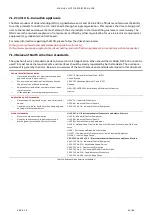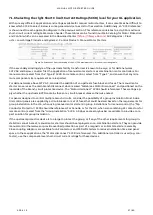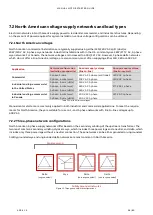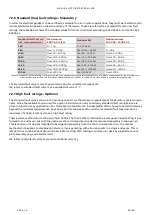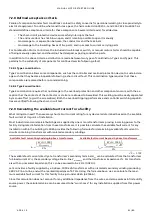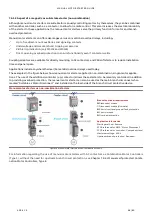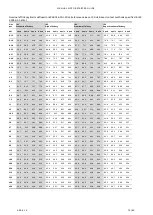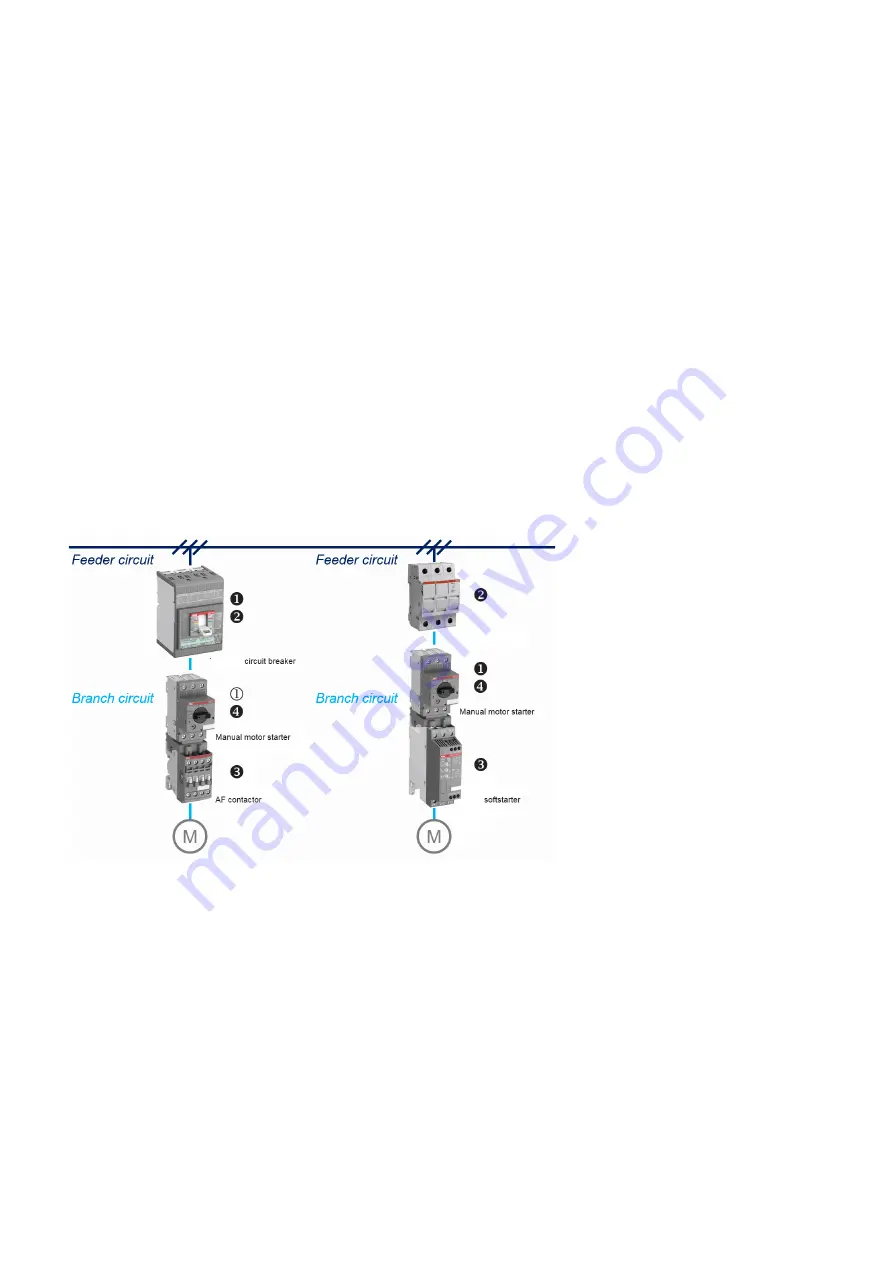
MANUAL MOTOR STARTER GUIDE
APRIL 19
68/80
7.6.1.2 As part of a magnetic or solid-state starter (non-combination)
Although manual motor starters are suitable for manually controlling motors by themselves, they can be combined
with another controller, such as a contactor, to allow for remote control. This also increases the electrical durability
of the starter. In these applications, the manual motor starters serve the primary function for motor and branch
overload protection.
Manual motor starters can offer advantages versus conventional overload relays, including:
Up to five direct-mount auxiliaries and signaling contacts
Undervoltage and remote (shunt) tripping accessories
Visible trip indication (only MS132 and MS165)
Direct-opening overload protection to ensure functionality even if contactor welds
Coupling adaptors are available for directly mounting to AF contactors and PSR softstarters to reduce installation
time and panel space.
Applications include anywhere thermal (bi-metallic) overload relays used today.
The examples in the figure below show manual motor starters applied in non-combination, single-motor applica-
tions. The use of the additional controller (e.g. contactor) allows these starters to be remotely controlled. In addition
to providing overload protection, the manual motor starter can also be used as the main branch disconnect when
marked “Suitable as Motor Disconnect” and installed on the load-side of the branch circuit protective device.
Manual motor starters as non-combination starters
Branch functional requirements
Disconnect means
Disconnect means (alternate)
Short-circuit and ground-fault protection
Control means
Overload protection
Application information
Starting method: Remote
SCCR reference for MMS: “Motor Disconnect”
SCCR reference for controller: Component-level
Maximum voltage: 600
Δ
Upstream branch protection: Required
Figure 39: Manual motor starters as non-combination starters.
For information regarding the use of manual motor starters with AF contactors as Combination Motor Controllers
(Type F), without the need for upstream branch circuit protection, see
Chapter 7.6.2.1 Manual self-protected Combi-
nation Motor Controllers, Type E.

